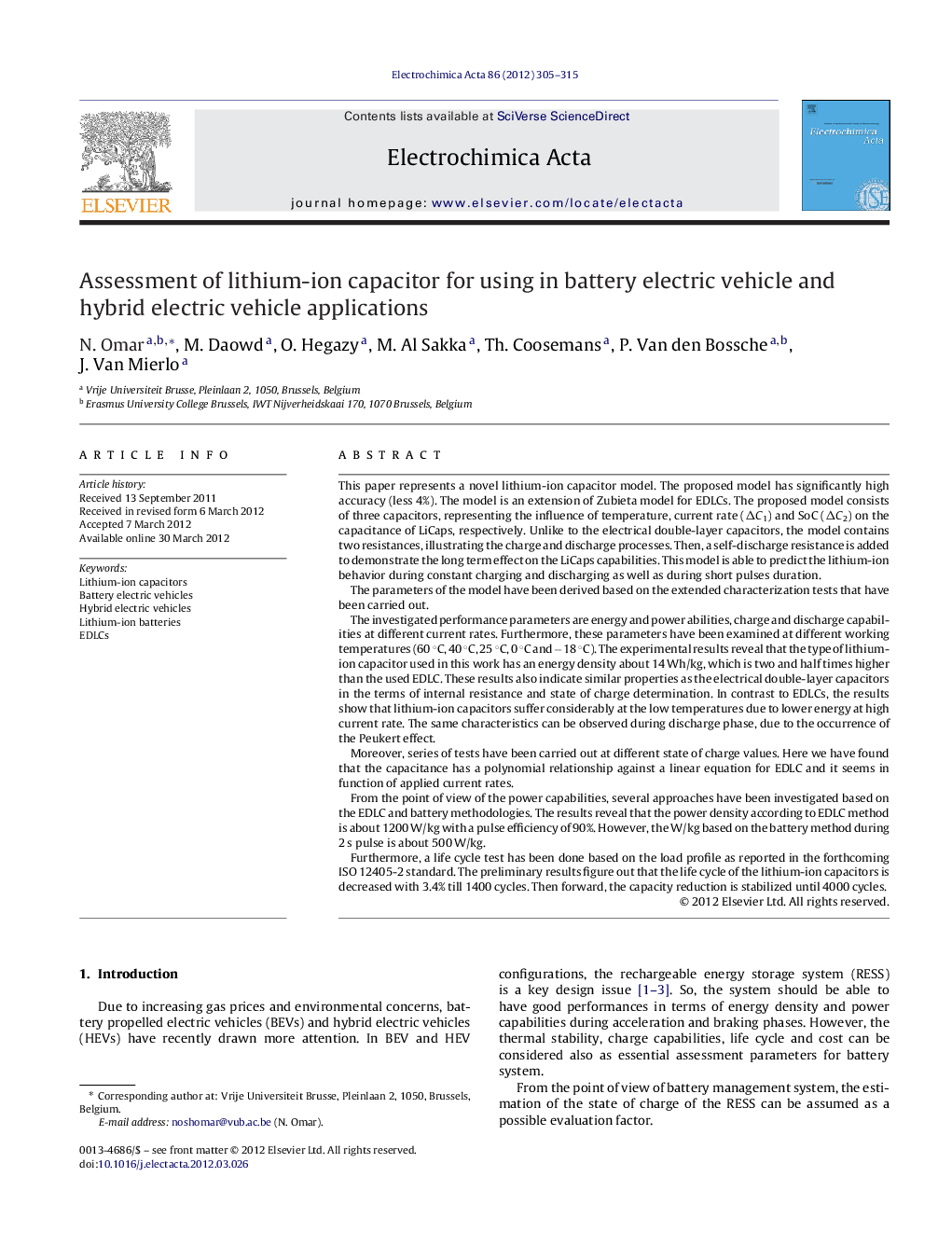| کد مقاله | کد نشریه | سال انتشار | مقاله انگلیسی | نسخه تمام متن |
|---|---|---|---|---|
| 187552 | 459645 | 2012 | 11 صفحه PDF | دانلود رایگان |

This paper represents a novel lithium-ion capacitor model. The proposed model has significantly high accuracy (less 4%). The model is an extension of Zubieta model for EDLCs. The proposed model consists of three capacitors, representing the influence of temperature, current rate (ΔC1) and SoC (ΔC2) on the capacitance of LiCaps, respectively. Unlike to the electrical double-layer capacitors, the model contains two resistances, illustrating the charge and discharge processes. Then, a self-discharge resistance is added to demonstrate the long term effect on the LiCaps capabilities. This model is able to predict the lithium-ion behavior during constant charging and discharging as well as during short pulses duration.The parameters of the model have been derived based on the extended characterization tests that have been carried out.The investigated performance parameters are energy and power abilities, charge and discharge capabilities at different current rates. Furthermore, these parameters have been examined at different working temperatures (60 °C, 40 °C, 25 °C, 0 °C and −18 °C). The experimental results reveal that the type of lithium-ion capacitor used in this work has an energy density about 14 Wh/kg, which is two and half times higher than the used EDLC. These results also indicate similar properties as the electrical double-layer capacitors in the terms of internal resistance and state of charge determination. In contrast to EDLCs, the results show that lithium-ion capacitors suffer considerably at the low temperatures due to lower energy at high current rate. The same characteristics can be observed during discharge phase, due to the occurrence of the Peukert effect.Moreover, series of tests have been carried out at different state of charge values. Here we have found that the capacitance has a polynomial relationship against a linear equation for EDLC and it seems in function of applied current rates.From the point of view of the power capabilities, several approaches have been investigated based on the EDLC and battery methodologies. The results reveal that the power density according to EDLC method is about 1200 W/kg with a pulse efficiency of 90%. However, the W/kg based on the battery method during 2 s pulse is about 500 W/kg.Furthermore, a life cycle test has been done based on the load profile as reported in the forthcoming ISO 12405-2 standard. The preliminary results figure out that the life cycle of the lithium-ion capacitors is decreased with 3.4% till 1400 cycles. Then forward, the capacity reduction is stabilized until 4000 cycles.
Journal: Electrochimica Acta - Volume 86, 30 December 2012, Pages 305–315